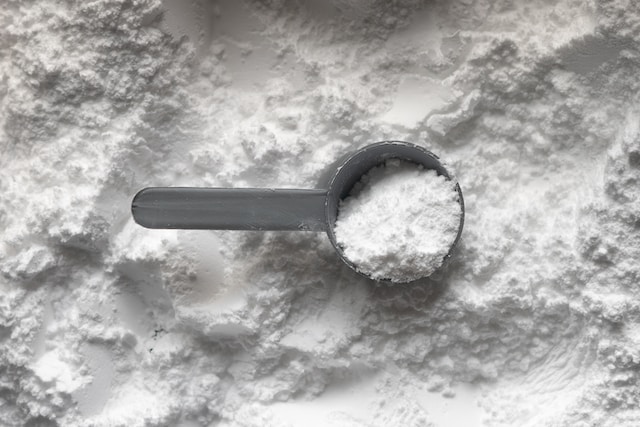Contents
What is Gluten-Free Flour and How Do You Use It in Baking?
Gluten-free flour is a type of flour that does not contain gluten, a protein found in wheat, rye, and barley. This flour is a popular alternative for individuals with gluten intolerance or celiac disease. Gluten-free flours are made from a variety of grains, such as rice, corn, quinoa, and sorghum, or from nuts, such as almonds or hazelnuts.
When using gluten-free flour in baking, it should be substituted in the same amount as regular flour. However, gluten-free flour does not have the same structure as wheat flour, so additional ingredients may be required to achieve the desired texture and taste. Common ingredients added to gluten-free flour blends include xanthan gum, guar gum, potato starch, and tapioca starch.
Gluten-free flour can be used in a variety of baked goods, such as cakes, cookies, bread, and pastries. The texture of the final product may differ slightly from those made with regular flour, but with the right recipe and ingredients, gluten-free baking can produce delicious and satisfying treats.
What is Gluten-Free Flour?
Gluten-free flour is made from grains, nuts, or seeds that do not contain the protein gluten. Gluten is found in wheat, barley, rye, and other related grains, and it helps give structure and elasticity to baked goods.
People with gluten sensitivities or celiac disease cannot eat foods that contain gluten without experiencing negative health effects, which is why gluten-free flour has become increasingly popular in recent years.
Types of Gluten-Free Flour
Almond Flour
Almond flour is made from ground blanched almonds and is a great gluten-free flour alternative for baking. It has a slightly sweet flavor and is high in protein and healthy fats.
Coconut Flour
Coconut flour is made from ground and dried coconut meat. It is high in fiber and low in carbohydrates, making it a great option for those following a low-carb or keto diet.
Brown Rice Flour
Brown rice flour is made from whole brown rice grains and has a slightly nutty flavor. It is a great gluten-free alternative for baking and is commonly used in gluten-free bread recipes.
Using Gluten-Free Flour in Baking
When it comes to baking with gluten-free flour, there are a few things to keep in mind:
- Gluten-free flour tends to be denser than regular wheat flour, so it may not rise as well. To combat this, try adding an extra leavening agent, like baking powder or yeast.
- Gluten-free flours absorb moisture differently, so you may need to adjust the amount of liquid in your recipe.
- If using a gluten-free flour blend, make sure to read the label to see what other ingredients are included. Some blends may already have leavening agents or xanthan gum added, which can affect the final product.
Gluten-Free Flour Resources
If you’re new to gluten-free baking, there are plenty of resources available to help you navigate the world of gluten-free flour:
- King Arthur Baking Company has a great guide to different types of gluten-free flours and how to use them in baking.
- Bob’s Red Mill has tips and tricks for using gluten-free flour in baking, as well as a variety of gluten-free flour blends.
- The Celiac Disease Foundation has a list of safe gluten-free flours for those with celiac disease or gluten sensitivities.
Conclusion
Gluten-free flour is a great alternative for those with gluten sensitivities or celiac disease. With a wide variety of options available, from almond flour to brown rice flour, it’s easy to experiment and find what works best for your baking needs.
Frequently Asked Questions about Gluten-Free Flour
What is gluten-free flour?
Gluten-free flour is a type of flour that is made without wheat, barley, or rye. It is often made from a combination of alternative flours such as rice flour, corn flour, and tapioca flour. It is suitable for those who have gluten intolerance or celiac disease.
How do you use gluten-free flour in baking?
When using gluten-free flour in baking, it is important to keep in mind that it does not have the same elastic properties as wheat flour. As a result, it can produce baked goods that are denser and have a different texture. Some tips for using gluten-free flour in baking include:
- Using a combination of gluten-free flours (such as rice flour and almond flour) to get a better texture and flavor.
- Adding xanthan gum or guar gum to help bind the ingredients together and create a more elastic texture.
- Being careful not to overwork the dough when mixing, as this can make the baked goods tough.
- Adjusting the baking time and temperature as needed, as gluten-free flours may cook faster or slower than wheat flour.
What types of baked goods can you make with gluten-free flour?
Gluten-free flour can be used to make a variety of baked goods, such as cakes, muffins, pancakes, and bread. However, it is important to note that the texture and taste may be different from their wheat flour counterparts. It may take some experimentation to figure out the best way to use gluten-free flour in your favorite recipes.
Why Choosing Whole Grain Flour is a Better Option:
What is Whole Grain Flour?
Whole grain flour is flour that is made from the entire grain, including the bran, germ, and endosperm. This type of flour is richer in nutrients than refined flour, which only contains the endosperm.
Benefits of Using Whole Grain Flour
Using whole grain flour in your baking has many benefits, including:
- More Nutrients – Whole grain flour contains more vitamins, minerals, and fiber than refined flour, making it a much healthier option.
- Better Taste and Texture – Many people find that whole grain flour has a nuttier, richer taste than refined flour. It also creates a denser, chewier texture that is perfect for breads and other baked goods.
- Improved Digestion – Because whole grain flour is high in fiber, it can help improve digestion and keep you feeling full and satisfied for longer periods of time.
How to Incorporate Whole Grain Flour in Your Baking
There are many ways to incorporate whole grain flour in your baking. Some tips include:
- Replace half of the white flour in your recipe with whole grain flour to start. You can gradually increase the amount until you are using 100% whole grain flour.
- Use whole grain flour in recipes that call for it, such as whole wheat bread or oatmeal cookies.
- Experiment with different types of whole grain flours, such as rye, spelt, or barley flour, to add variety to your baking.
Conclusion
Choosing whole grain flour is a great way to make your baking healthier and more nutritious. With a little experimentation, you can incorporate whole grain flour into your favorite recipes and enjoy the benefits of this delicious and nutritious ingredient!
What is gluten-free flour and how do you use it in baking?
- Gluten-free flour is a type of flour made from grains or other ingredients that do not contain gluten.
- Gluten is a protein found in wheat, barley, and rye, and can cause health issues for those with Celiac disease or gluten intolerance.
- Gluten-free flours include almond, coconut, rice, and cassava flour, among others.
- When baking with gluten-free flour, it is important to note that it behaves differently than wheat flour and may require additional liquid or binding agents.
- It is also important to check that all other ingredients used in the recipe are gluten-free to avoid cross-contamination.
- When substituting wheat flour for gluten-free flour, it is recommended to use a 1:1 ratio or to follow specific recipe instructions for best results.







































